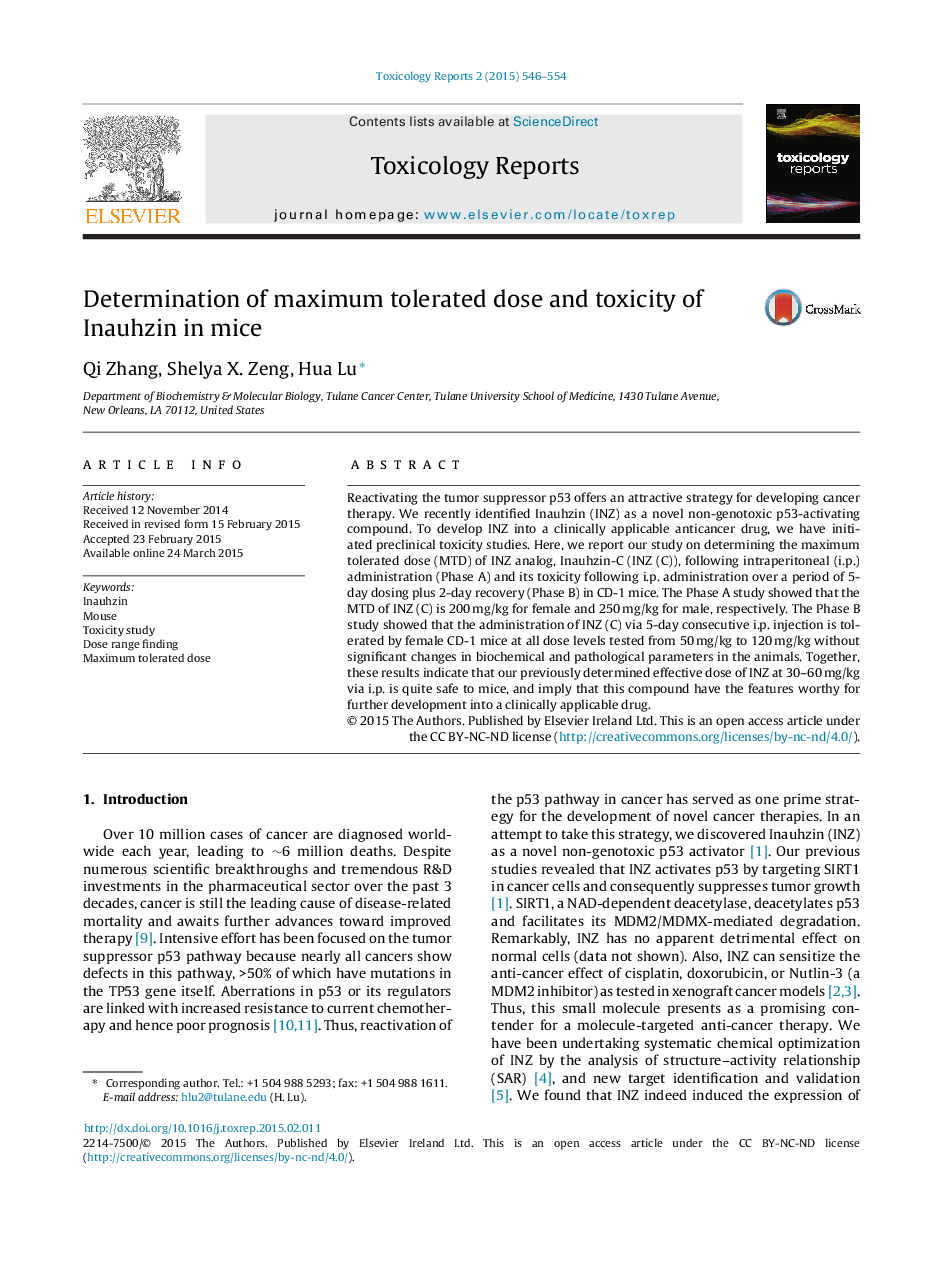| Article ID | Journal | Published Year | Pages | File Type |
|---|---|---|---|---|
| 2572247 | Toxicology Reports | 2015 | 9 Pages |
Reactivating the tumor suppressor p53 offers an attractive strategy for developing cancer therapy. We recently identified Inauhzin (INZ) as a novel non-genotoxic p53-activating compound. To develop INZ into a clinically applicable anticancer drug, we have initiated preclinical toxicity studies. Here, we report our study on determining the maximum tolerated dose (MTD) of INZ analog, Inauhzin-C (INZ (C)), following intraperitoneal (i.p.) administration (Phase A) and its toxicity following i.p. administration over a period of 5-day dosing plus 2-day recovery (Phase B) in CD-1 mice. The Phase A study showed that the MTD of INZ (C) is 200 mg/kg for female and 250 mg/kg for male, respectively. The Phase B study showed that the administration of INZ (C) via 5-day consecutive i.p. injection is tolerated by female CD-1 mice at all dose levels tested from 50 mg/kg to 120 mg/kg without significant changes in biochemical and pathological parameters in the animals. Together, these results indicate that our previously determined effective dose of INZ at 30–60 mg/kg via i.p. is quite safe to mice, and imply that this compound have the features worthy for further development into a clinically applicable drug.
